Friday, March 17 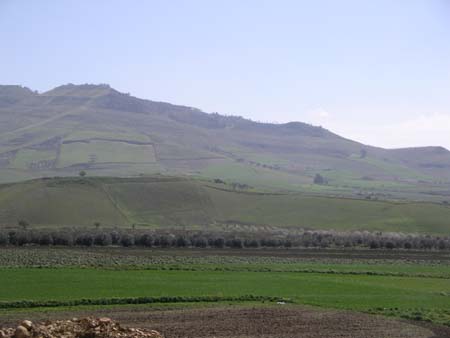
We left Agrigento this morning and made our way into the central
part of Sicily heading toward the city of Piazza Armerina and especially Villa
del Casale, a famous Roman estate with wonderfully preserved mosaics. This
was another great opportunity to see Sicily's countryside, and we 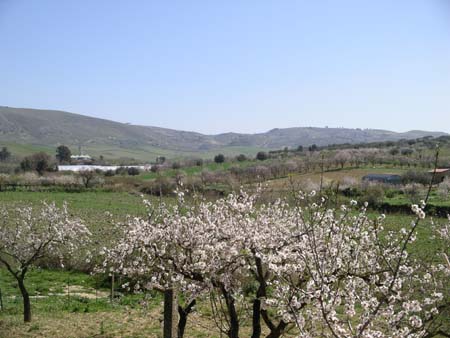 intentionally
took back roads that rewarded with beautiful scenery. Most of the land is
filled with olive trees, flowering almond trees, sweeping vineyards and farms
of prickly-pear cactus (its fruit is eaten, made into jams and a sweet liquor
that we had an opportunity to
intentionally
took back roads that rewarded with beautiful scenery. Most of the land is
filled with olive trees, flowering almond trees, sweeping vineyards and farms
of prickly-pear cactus (its fruit is eaten, made into jams and a sweet liquor
that we had an opportunity to 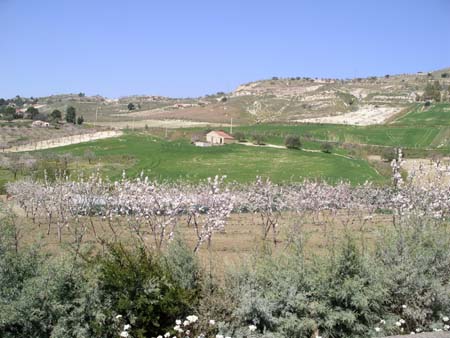 taste
back in Erice). We found ourselves frequently stopping along the road to enjoy
the scenery and to take pictures
taste
back in Erice). We found ourselves frequently stopping along the road to enjoy
the scenery and to take pictures
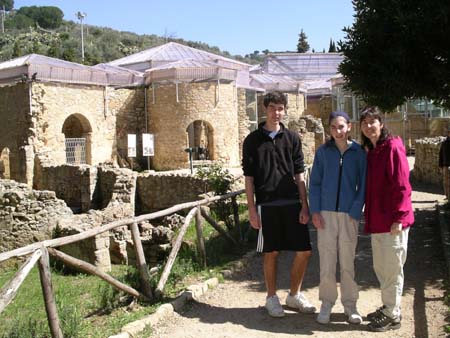 We
arrived in Piazza Armerina late in the morning and immediately visited the
Villa del Casale. This was part of a 4th century Roman estate and is considered
to be one of Sicily's most important archeological dis
We
arrived in Piazza Armerina late in the morning and immediately visited the
Villa del Casale. This was part of a 4th century Roman estate and is considered
to be one of Sicily's most important archeological dis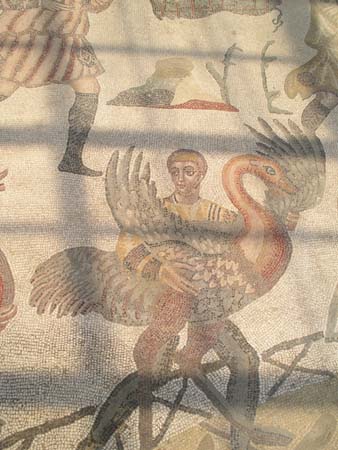 coveries.
It is best known for the intricate mosaics that decorated every room and were
amazingly well preserved thanks to a flood that buried the estate in mud in
the 12th century. The estate was excavated during the 20th century
coveries.
It is best known for the intricate mosaics that decorated every room and were
amazingly well preserved thanks to a flood that buried the estate in mud in
the 12th century. The estate was excavated during the 20th century 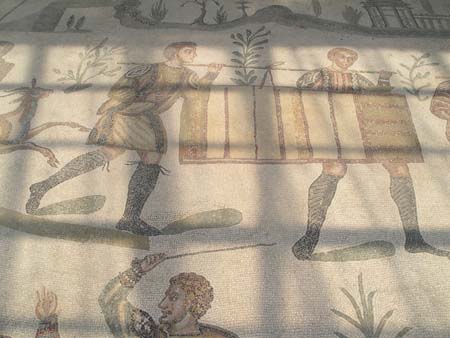 and
is now a UNESCO World Heritage site.
and
is now a UNESCO World Heritage site.
We enjoyed exploring the villa at a leisurely pace, again taking advantage
of the lack of tourists during Sicily's slow season. The best mosaics are
in the villa's long corridor and illustrate various hunting scenes. There
are also depictions of various gods, mythical sea creatures as well as geometric
designs.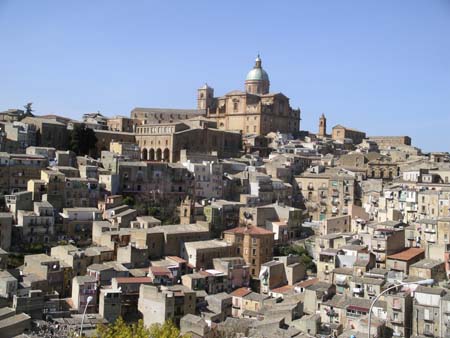
After visiting the villa, we enjoyed another wonderful lunch (this pasta for lunch habit is going to be hard to break!), and got back on the road heading south toward the city of Ragusa. We didn't have time to visit the city of Piazza Armerina, but stopped to take pictures and admire its large cathedral standing out among mazes of small streets and alleys.
 Ragusa
is split into two cities. The larger, more modern part is called Ragusa and
was entirely rebuilt after a huge earthquake in 1693. The older part of Ragusa
is called Ibla, and has been inhabited since the 3rd century BC. It is smaller,
quieter, and filled with narrow streets that are very interesting to explore.
Ragusa and Ibla are linked by a deep rocky valley that is accessible either
through a winding road or a steep walkway. Ibla is home to some fantastic
restaurants, and after checking in to our hotel in Ragusa (the "Mediterraneo
Palace"), we made
Ragusa
is split into two cities. The larger, more modern part is called Ragusa and
was entirely rebuilt after a huge earthquake in 1693. The older part of Ragusa
is called Ibla, and has been inhabited since the 3rd century BC. It is smaller,
quieter, and filled with narrow streets that are very interesting to explore.
Ragusa and Ibla are linked by a deep rocky valley that is accessible either
through a winding road or a steep walkway. Ibla is home to some fantastic
restaurants, and after checking in to our hotel in Ragusa (the "Mediterraneo
Palace"), we made 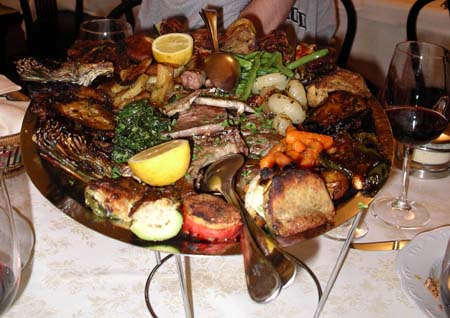 reservations
for dinner and then drove to Ibla in the late afternoon. This gave us time
to walk through some of Ibla's streets before dinner, and we enjoyed stopping
in a few shops and chatting with local merchants who were able to speak a
small amount of English. We have found that in general, few people outside
of the hotels and restaurants speak any English at all, and we try to take
every advantage of opportunities to speak with people to learn about life
in Sicily.
reservations
for dinner and then drove to Ibla in the late afternoon. This gave us time
to walk through some of Ibla's streets before dinner, and we enjoyed stopping
in a few shops and chatting with local merchants who were able to speak a
small amount of English. We have found that in general, few people outside
of the hotels and restaurants speak any English at all, and we try to take
every advantage of opportunities to speak with people to learn about life
in Sicily.
Dinner at Il Barocco was fantastic, highlighted by a huge plate of grilled meats and vegetables that was advertised as a meal for two, but actually was probably enough to feed all of us. Given the fact that we also ordered two antipasta salads and two plates of pasta, we left extremely satisfied.
The drive back to the hotel was a real adventure. We're not sure how we even made it back to Ragusa, especially since the nighttime navigation was particularly difficult. Tomorrow we plan on exploring two other nearby towns - Modica and Marina di Ragusa.
